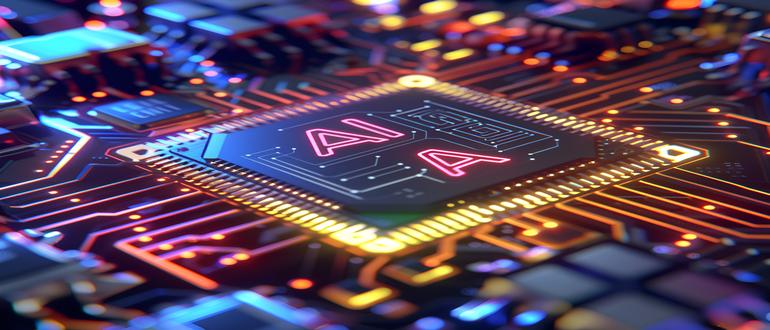
In the scorching summer of 2023, a major AI-driven data center in Texas faced an unexpected crisis: rolling blackouts. As temperatures soared past 110°F, the facility—which powers advanced AI models for autonomous vehicles and large-scale language processing— received an urgent notice from the state’s power grid operator to reduce its energy consumption or shut down entirely.
This moment underscored a growing dilemma: AI infrastructure is expanding at an unprecedented pace, but the energy grid is struggling to keep up. Today, with AI models requiring exponentially more computational power, the U.S. faces a critical challenge: to sustain the growth of data centers without overwhelming the energy supply.
Recent executive orders from both the Biden and Trump administrations are attempting to tackle this issue, reshaping policies on energy production, semiconductor manufacturing and AI infrastructure security. These decisions are not just bureaucratic maneuvers; they are fundamentally altering the landscape for data centers, clean energy adoption and U.S. technology leadership.
Balancing Energy Demands with Clean Energy Commitments
The numbers paint a stark picture. According to a December 2024 report from the U.S. Department of Energy, data centers accounted for 4.4% of national electricity consumption—up from 2.5% in 2015. With AI workloads increasing, estimates suggest that figure could rise to as high as 12% by 2028.
Recognizing this, both the Biden and Trump administrations have issued executive orders to expand power generation capacity. Earlier this year, Biden issued an executive order directing federal agency to accelerate AI infrastructure development while aligning with clean energy goals. The order mandates the Department of Defense and Department of Energy to identify federal land suitable for AI data centers powered by renewables, streamlining their integration into the grid. This order is built on previous efforts, including the Inflation Reduction Act’s incentives for clean energy projects.
Upon taking office, President Trump issued a separate executive order prioritizing domestic energy expansion, revising regulations on coal-fired plants, and supporting fossil fuel infrastructure to ensure stable energy supplies for AI data centers. While the two administrations displayed different stances on the sources for generating electricity, they both emphasized the criticality of expanding the power supply by developing next-generation nuclear power and energy storage technologies to support technological competitiveness.
Independent of the politics, hyperscalers such as Google, Amazon and Microsoft are already investing in power generation, including renewable sources, dedicated nuclear reactors and co-located fossil fuel facilities in the mix.
Opportunities for Small Businesses
While the CHIPS and Science Act provided billions in funding to major semiconductor manufacturers to build domestic fabs, it also set the stage for a broader innovation ecosystem in AI infrastructure. The expansion of domestic chip production creates ripple effects, opening doors for startups and small businesses developing specialized hardware, AI accelerators and storage solutions that optimize data center efficiency.
For smaller companies, the real opportunity lies in building on top of these foundational investments rather than competing with large-scale fabs. AI models demand more than cutting-edge processors; they require high-performance storage, memory expansion solutions and efficient data movement technologies to maximize computing resources. Companies that focus on reducing AI’s energy footprint through smarter infrastructure solutions stand to benefit from this shift.
For example, startups working on storage and memory efficiency innovations enable AI workloads to process more data with less physical storage, reducing power consumption and extending hardware lifespan. Similarly, the advent of Compute Express Link™ (CXL) memory pooling offers opportunities for companies developing advanced memory interconnects that help AI models scale efficiently without overloading servers.
Rather than competing in the high-capital semiconductor fabrication space, small businesses and startups can thrive by focusing on adjacent technologies—optimizing storage, memory, security and interconnects—that enable AI infrastructure to operate at scale while minimizing power consumption. The executive orders supporting U.S.-made AI technology will amplify these opportunities by prioritizing supply chain resilience, domestic innovation and secure AI deployment.
The Role of Smart Storage in Reducing AI’s Energy Impact
Beyond chips and servers, storage and memory play a critical role in AI infrastructure sustainability. Modern SSDs are not just storage devices — they actively optimize how data is processed and moved, reducing latency and energy overhead.
For example, hardware-based compression and write-reduction technologies decrease the total amount of energy required per terabyte stored. Meanwhile, CXL memory expansion modules increase the effective memory bandwidth per core, leading to higher processor utilization and less wasted energy. These improvements mean that AI workloads can run faster while using less power—a crucial factor in mitigating the growing pressure on the power grid.
Global Collaboration: A New Standard for Secure AI Infrastructure
Energy isn’t the only challenge facing AI-driven data centers. Security remains a major concern as well, especially as AI models process sensitive government, healthcare and financial data. This is where open-source security initiatives, such as Caliptra, come into play. Backed by industry leaders, Caliptra establishes an open security standard for AI accelerators, ensuring that hardware components are both secure and verifiable.
As regulations and policy makers worldwide continue to shape AI policy, building a resilient AI security framework is of utmost importance. By integrating security at the hardware level while also focusing on energy efficiency, these innovations aim to make AI-driven data centers not just more powerful, but also more sustainable and resilient against cyber threats.
AI’s march forward is unstoppable, but its future depends on how well we balance technological innovation with environmental and security concerns. The recent executive orders are setting the stage for a more sustainable AI infrastructure—one where energy efficiency, domestic semiconductor manufacturing and global security collaboration are at the forefront.
For businesses in the AI infrastructure space, these changes present both challenges and opportunities. Whether through advanced SSDs, CXL-based memory expansion, or new security standards like Caliptra, companies that align with these policy shifts will be best positioned to thrive in the AI-powered future.


